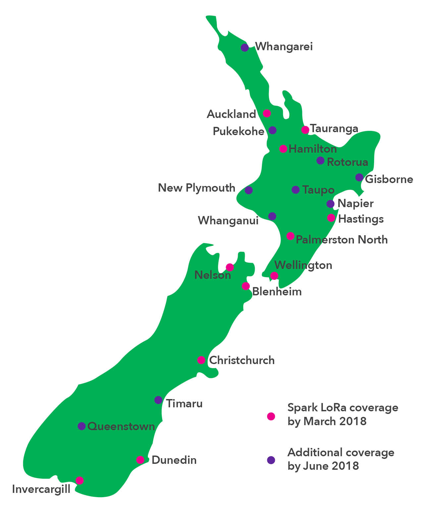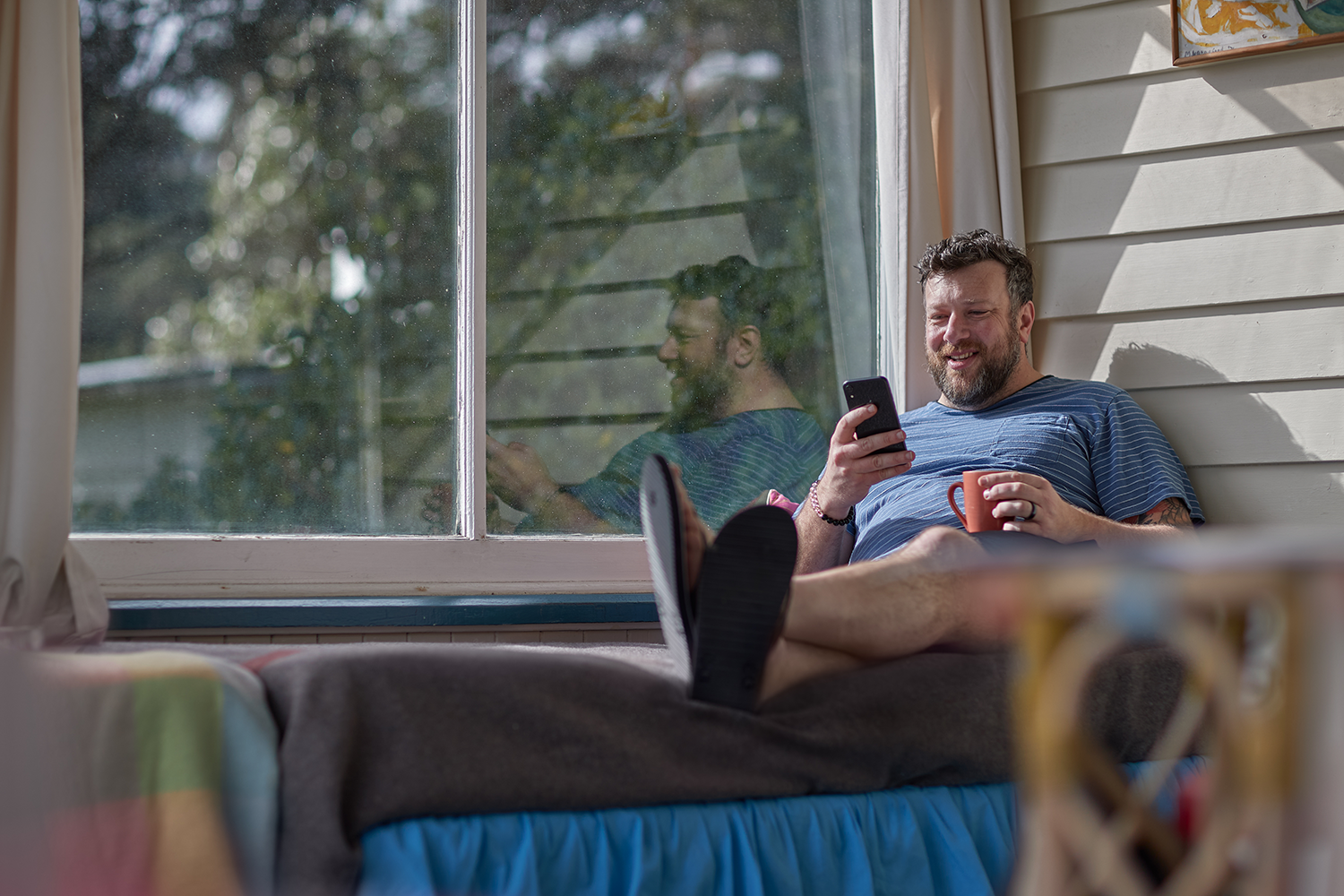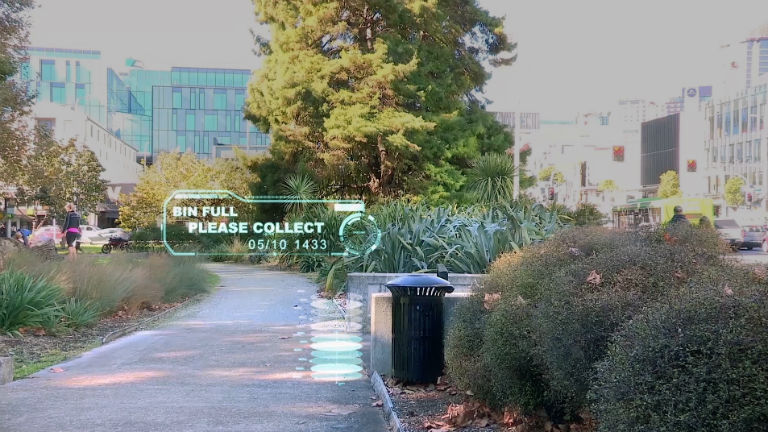Please configure
Spark switches on long-range ‘internet of things’ network across New Zealand
Image: IoT technology can help New Zealand cities run smarter and safer.
Download high resolution IoT imagery here.
New Zealand organisations wanting to jump on board the internet of things (IoT) now have a new network to plug into.
Spark announced today that its long-range, low-power network is now available for commercial use in 60% of the places New Zealanders live and work.*
This means businesses and local councils can use the network to connect to things like vehicles, waterways, machinery and carparks. Sensors on these objects are able to send information over the network to the people managing the objects. Commands can also be sent back to sensors, telling them when to kick in or the kind of information to report on. For example, the volume of rubbish in a public bin, or water pH in a stream.
Michael Stribling, Spark’s General Manager IoT Solutions, said, “Our IoT capability is really gathering pace, and now we’ve got this critical mass of coverage we’re able to make the network commercially available. This is a real milestone for Spark as we help New Zealand organisations win big in IoT.
“While we currently have 60% of rural and urban New Zealand covered, we’ll be working to extend that to 70% by July this year. We’re also looking to partner with organisations to extend coverage into areas where they need it.”
The network uses LoRaWAN™ technology, which carries small amounts of data over long distances, using less power than cellular networks. This makes it ideal for connecting objects far from power sources. For example, to monitor an outdoor carpark or an employee working in a remote area.
Compared to cellular connectivity, Spark’s new long-range network is an affordable IoT option. It works with a wide range of low-cost sensor technologies that are significantly cheaper on average than sensors for cellular networks.
The cost to use the network is based on the number of sensors connected, and the number of messages those sensors send each month. For example, a dairy farm in the Manawatu wanting an hourly update on the location and body temperature of its cows will pay up to $1.79 per cow each month for connectivity. Designed for scale, the cost per connection decreases as the number of sensors increases.
Cities to get ‘smarter’ with LoRaWAN™
Spark has been testing LoRaWAN™ technology on trial sites for well over a year, with partners from a range of industries, including agriculture, marine and smart buildings. Now that the network has been switched on, councils are looking at how it can enable them to operate and maintain key infrastructure in smarter ways.
NB Smartcities NZ, a local NZ company offering smart city services, will look to utilise the new network for its smart outdoor lighting technology, amongst other solutions. This technology is now available to towns and cities throughout the country.
Councils will be able to use the smart lighting technology to manage streetlights remotely, applying bespoke dimming profiles, monitoring maintenance and turning them on or off as needed. This will enable them to respond faster to community requests, events and changes in daylight to keep streets safer for people, save power and reduce carbon emissions.
Claus Oustrup, Director NB Smartcities NZ said, “The new Spark network offers real options to our council customers to leverage a range of smart city applications in addition to smart light technology. As we continue to develop leading-edge technology in the IoT space we are really excited about the options and solutions we can bring to market through this new Spark network.
“For many councils, having real-time data, asset information and being in control of these devices can improve customer service response times and create real benefits for communities. For example, street lighting can account for as many as 50% of call centre complaints. By having adaptable street lighting managed with real-time systems, these complaints can be quickly addressed, and their volume decreased,” said Oustrup.
“Previously there’s been no appropriate public network available for this kind of technology. To incorporate smart lighting, councils have seen it necessary to build networks, but this approach can involve ongoing liabilities. Further on, proprietary networks may not enable the full potential lowest cost when it comes to IoT capability and developments.”
Stribling said the new network will enable more IoT technologies from overseas, like smart street lighting, to be adopted here in New Zealand. It will also give New Zealand developers of IoT technologies the chance to launch their products here before taking them overseas.
“We’ve worked with the International LoRa Alliance to agree on Asia-Pacific standards so that products developed on LoRaWAN™ in New Zealand will work the same way on LoRaWAN™ networks in other countries.
“It’s Spark’s vision to help New Zealand businesses find their edge here in New Zealand and overseas. Connected technologies play a big role in bridging the geographical barriers we face as a country. It’s critical for us that the networks we provide enable New Zealand businesses to reach the world,” Stribling said.
Notes to the editor:
- Spark is delivering two public, standards-based IoT networks—CAT-M1 and LoRaWAN™—to cater to different use-cases. Both come with mature global ecosystems. It continues to monitor use cases for NB-IoT technology.
- *Spark LoRaWAN™ coverage:
- There is currently coverage in Auckland, Tauranga, Hamilton, Rotorua, Palmerston North, Shannon, Wellington, Nelson, Blenheim, Christchurch, Dunedin. Sites in Hastings and Invercargill will go live in the next few weeks.

- NB Smartcities NZ is a local arm of NB Smartcities, working in partnership with kiwi firm McKay, offering agnostic smart city hardware, turnkey solutions including full IoT asset management solutions, and optional service management packages. The street lighting technology being used in New Zealand is a system developed internationally, with local system engineering, implementation and a service network in place.
- Levno
- Palmerston North-based agriculture company Levno has signed up as Spark’s first customer and will be working with the IoT network provider to extend coverage beyond Spark’s planned areas. Levno will use the LoRaWAN™ network to support its fuel tank monitoring sensors.
What the new network looks like
- Sites consist of a box (gateway) and antenna. Most of these are installed on Spark 4G cell sites, although the LoRaWAN™ network operates totally separate to 4G and other cellular networks. A small number of boxes are installed on third-party sites.
LoRaWAN™ partners
- Spark has partnered with Actility for its ThingPark Wireless platform. The Actility platform enables customers to monitor, control and capture information from IoT sensors in a simple and secure way.
- Spark has partnered with Kordia to deliver the physical network build and to maintain it.
- Kerlink have supplied the gateways.
If you’re interested in finding out more about a Spark IoT service, please visit www.sparkdigital.co.nz/solutions/iot/ or get in touch with us here and one of the IoT team will give you a call.

Lydia Tebbutt
+64 21 022 42243 | lydia.tebbutt@spark.co.nz
Please configure








